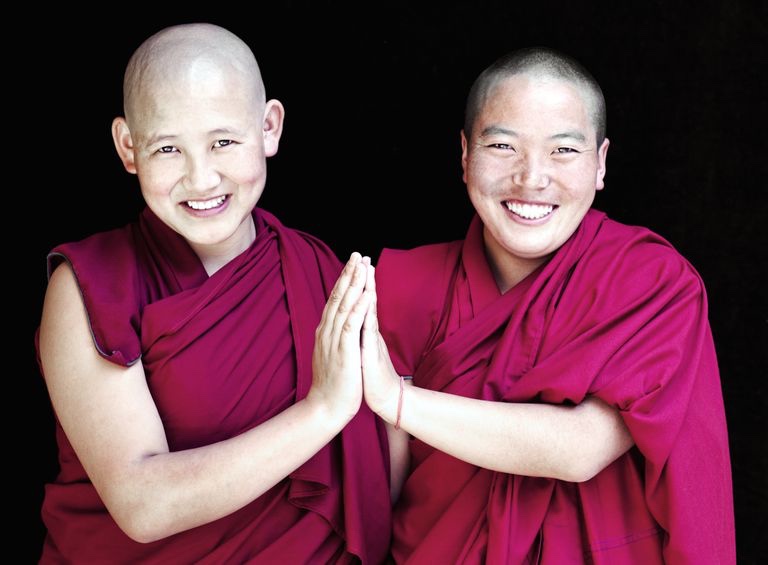And Why Is the Buddha Depicted With Curls?

Here’s a question that comes up from time to time — why do Buddhist nuns and monks shave their heads? We can speculate that perhaps shaving the head reduces vanity and is a test of a monastic’s commitment. It’s also practical, especially in hot weather.
Historical Background: Hair and the Spiritual Quest
Historians tell us that wandering mendicants seeking enlightenment were a common sight in first millennium BCE India. The historical record also tells us that these mendicants had issues with hair.
For example, some of these spiritual seekers deliberately left their hair and beards unkempt and unwashed, having taken vows to avoid proper grooming until they had realized enlightenment. There also are accounts of mendicants pulling out their hair by the roots.
The rules made by the Buddha for his ordained followers are recorded in a text called the Vinaya-pitaka. In the Pali Vinaya-pitaka, in a section called the Khandhaka, the rules say that hair should be shaved at least every two months, or when the hair has grown to the length of two finger-widths. It may be that the Buddha just wanted to discourage the weird hair practices of the time.
The Khandhaka also provided that monastics must use a razor to remove hair and not cut hair with scissors unless he or she has a sore on her head. A monastic may not pluck out or dye gray hair. Hair may not be brushed or combed — a good reason to keep it short — or managed with any kind of oil. If somehow some hair is sticking out oddly, it is all right to smooth it with one’s hand, however. These rules mostly seem to discourage vanity.
Head Shaving Today
Most Buddhist nuns and monks today follow the Vinaya rules about hair.
Practices do vary somewhat from one school to another, but the monastic ordination ceremonies of all schools of Buddhism include head shaving. It’s common for the head to be mostly shaved prior to the ceremony, leaving just a little on top for the ceremony officiant to remove.
The preferred form of shaving is still a razor. Some orders have decided that electric razors are more like scissors than a razor and therefore are forbidden by the Vinaya.
The Buddha’s Hair
The early scriptures tell us that the Buddha lived in the same way as his disciples. He wore the same robes and begged for food like everyone else. So why isn’t the historical Buddha depicted bald, as a monk? (The fat, bald, happy Buddha is a different Buddha.)
The earliest scriptures don’t tell us specifically how the Buddha wore his hair, although stories of the Buddha’s renunciation tell us he cut his long hair short when he began his quest for enlightenment.
There is, however, one clue that the Buddha didn’t shave his head after his enlightenment. The disciple Upali originally was working as a barber when the Buddha came to him for a haircut.
The first depictions of the Buddha in human form were made by the artists of Gandhara, a Buddhist kingdom that was located in what is now Pakistan and Afghanistan, 2000 years or so ago. The artists of Gandhara were influenced by Greek and Roman art as well as Persian and Indian art, and many of the earliest Buddhas, sculpted in the early first millennium CE, was sculpted in an unmistakably Greek/Roman style.
These artists gave the Buddha curly hair clasped in a topknot. Why? Perhaps it was a popular men’s hairstyle at the time.
Over the centuries the curly hair became a stylized pattern that sometimes looks more like a helmet than hair, and the topknot became a bump. But depicting the historical Buddha with a shaved head remains rare.
Reference
- O’Brien, Barbara. “Buddhist Monks and Shaved Heads.” Learn Religions, Aug. 25, 2020, learnreligions.com/why-buddhist-monks-and-nuns-shave-their-heads-449598.
